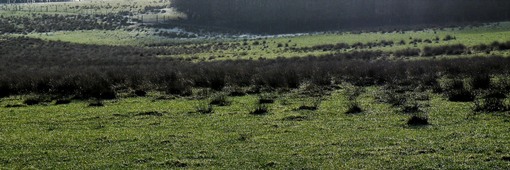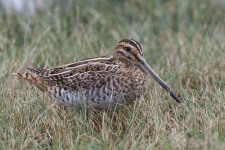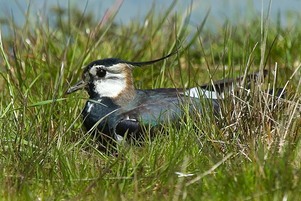

Biodiversity
Action
Plan
Rush pasture features
A full range of wildlife species requires a range of features within Rush Pastures. A diverse structure of medium to tall vegetation holds more species and greater population densities than too short vegetation.
Rush Pastures are generally open and unshaded. Some permanently wet areas dominated by sedges and mosses increase the diversity of wildlife species as do a few areas of bare ground. It is reduced by under or over grazing and agricultural runoff.
The areas of tussocky grass and rush are important, characteristic features.
Species supported by rush pasture
Bird species.
Rush pastures are most notable locally for their breeding waders, Curlew, Redshank, Snipe and Lapwing, and perhaps Oystercatcher.
Mammals found in rush pasture habitats include Brown Hare, …
Reptiles and amphibians. Rush Pasture can support Grass Snake, and Common Toad and Great Crested Newt where there is open water nearby for breeding.
Invertebrates
Rush pasture supports a wide range of insects and other invertebrates.
Plants
Purple Moor Grass is often abundant together with rushes in tussocky upland grasslands which are sometimes dotted with Tormentil (M25). In some areas Heath Rush may be present (U6)
More species rich Rush Pastures have Sharp-flowered Rush as well as Soft Rush, and Purple Moor Grass, Yorkshire Fog, Brown Bent, and Sweet Vernal Grass. Common Marsh Bedstraw, Greater Birds Foot Trefoil, Marsh Thistle, Creeping Buttercup, and Meadow sweet can also be found. [M23]
In poorly drained farmland pastures or neglected grassland areas, Soft Rush becomes more abundant, or occasionally Hard Rush, with Yorkshire Fog and Creeping Bent, a range of sedges, Creeping Buttercup and sometimes Cuckoo Flower. Meadow Sweet can also occur in these Rush Pastures but grazing may remove it. MG10
Areas of both dense and open swards of rush are necessary to support breeding wader species.
Too much vigorous rush growth can make it difficult for waders. Where tussocks are very sparse, not enough cover is available for nesting.
the majority require high water quality.
Each wader requires slightly different conditions:
Snipe needs tall, rushy, tussocks and damp ground.
Curlew usually select relatively tall vegetation.
Lapwing is found in shorter swards and slightly drier conditions.
Redshank prefers short swards with tussocky areas for nesting.
Brown Hare prefers shorter vegetation for feeding at night and more cover for resting during the day.
Areas of dense litter are beneficial to over-wintering insects and small mammals, but should be less than 25% of the total area by October.

Rush Pasture Features

